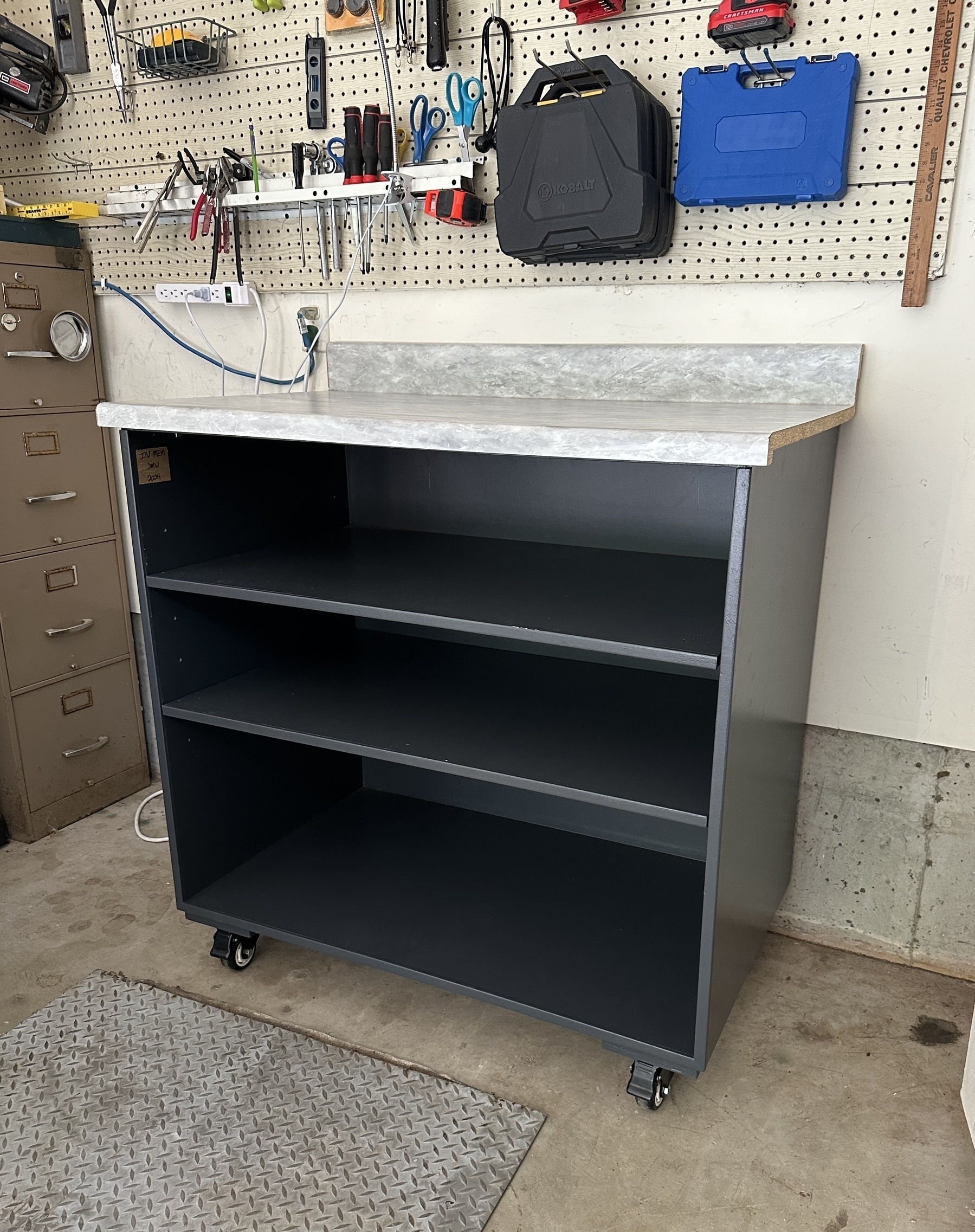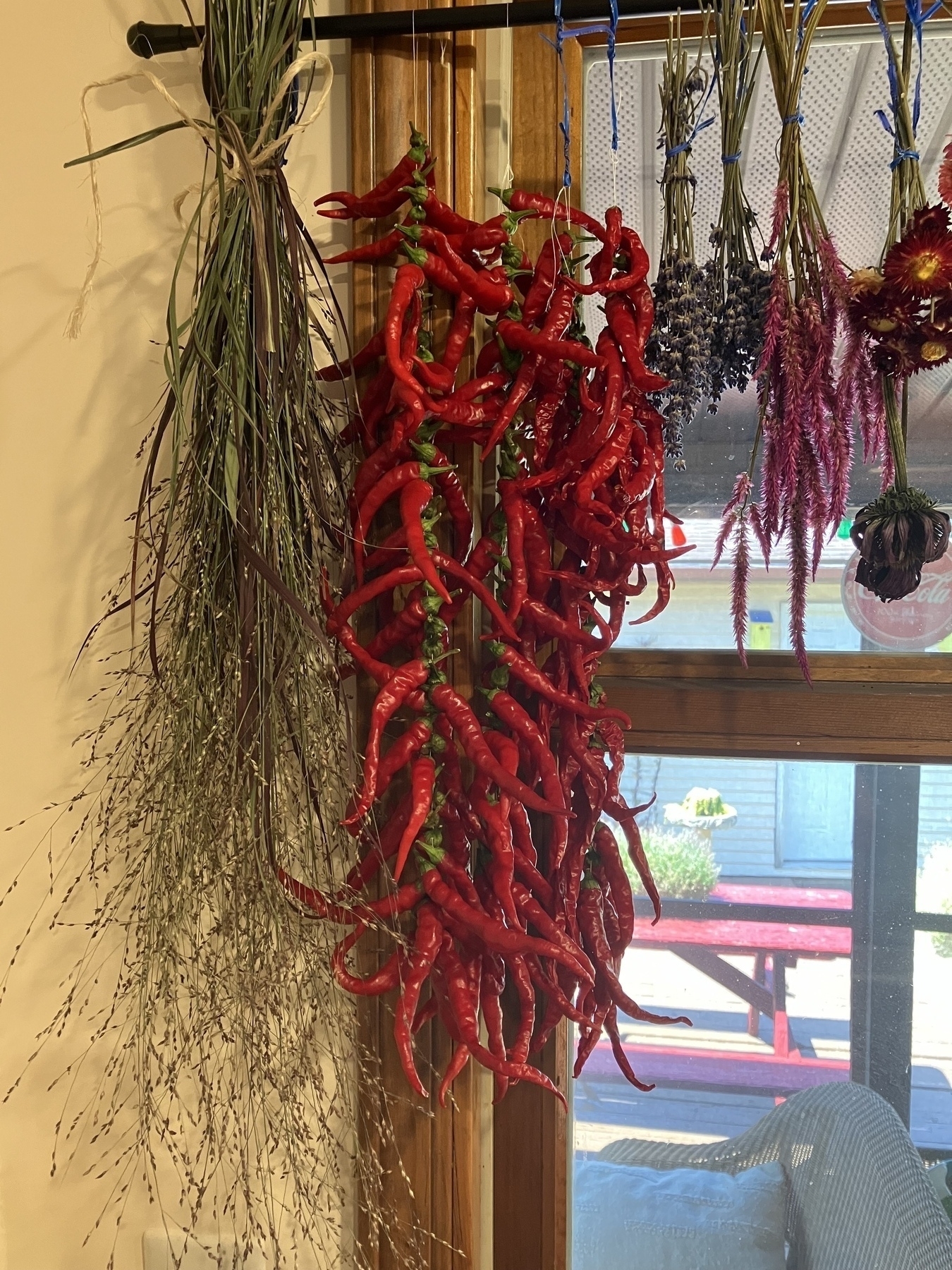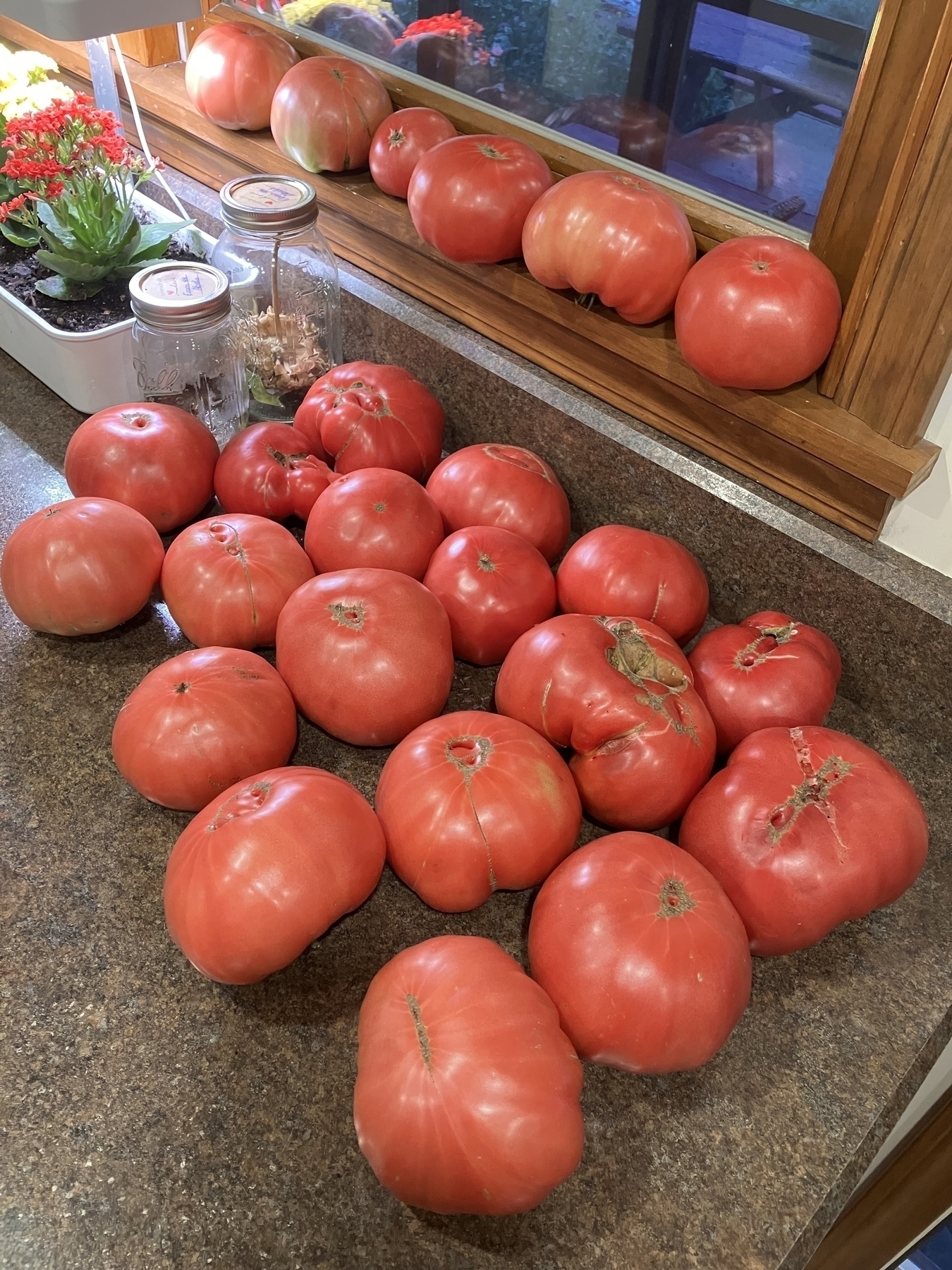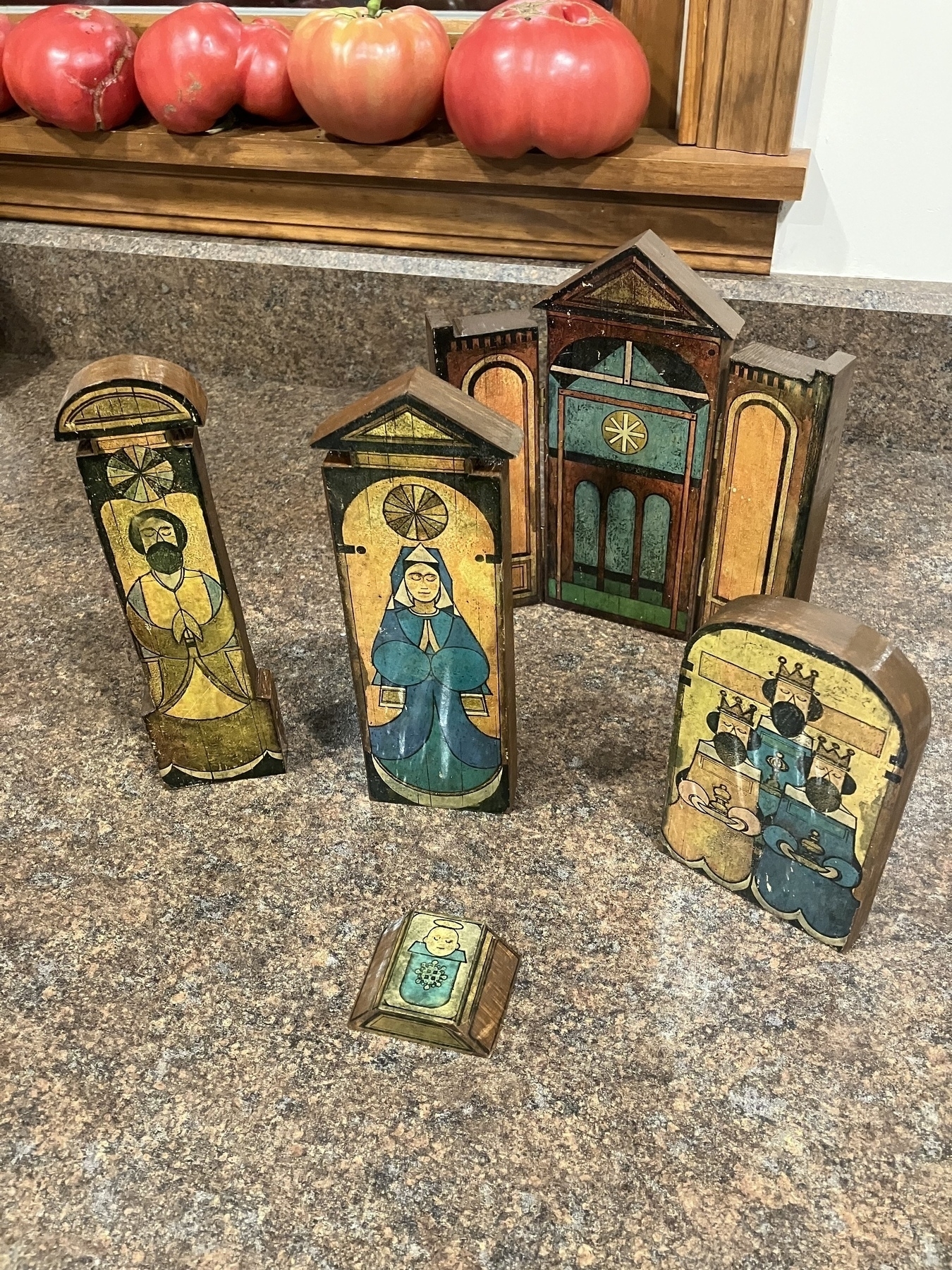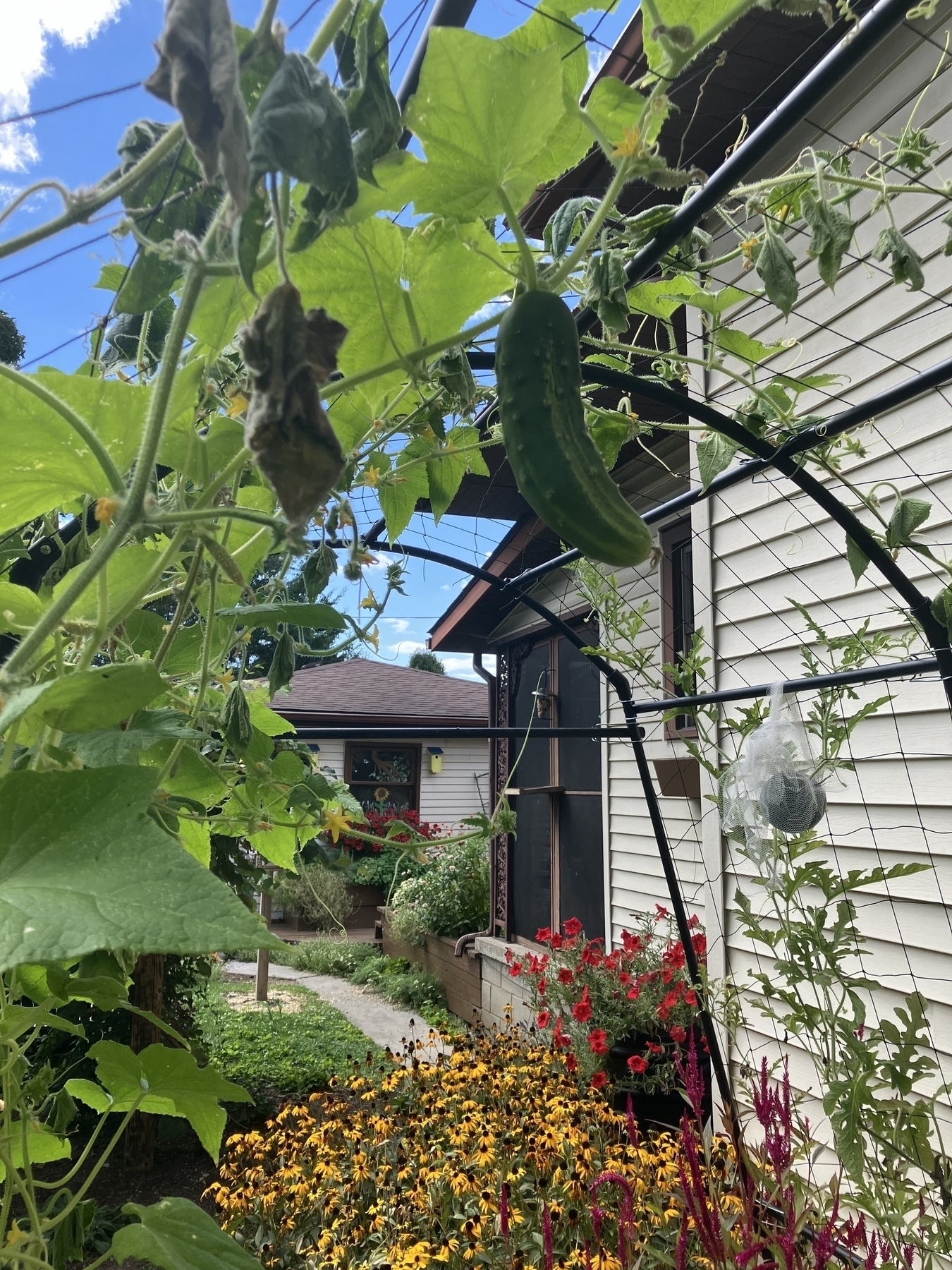A few months ago, a very generous friend decided to give me some of his grandfather’s tools: a bench grinder, a small drill press, and a benchtop disc sander.
All he asked in return was an open-front, mobile cabinet that he could use in his garage and for cookouts. He already had a countertop. So I built it of birch plywood and added four lockable wheels and adjustable shelves.
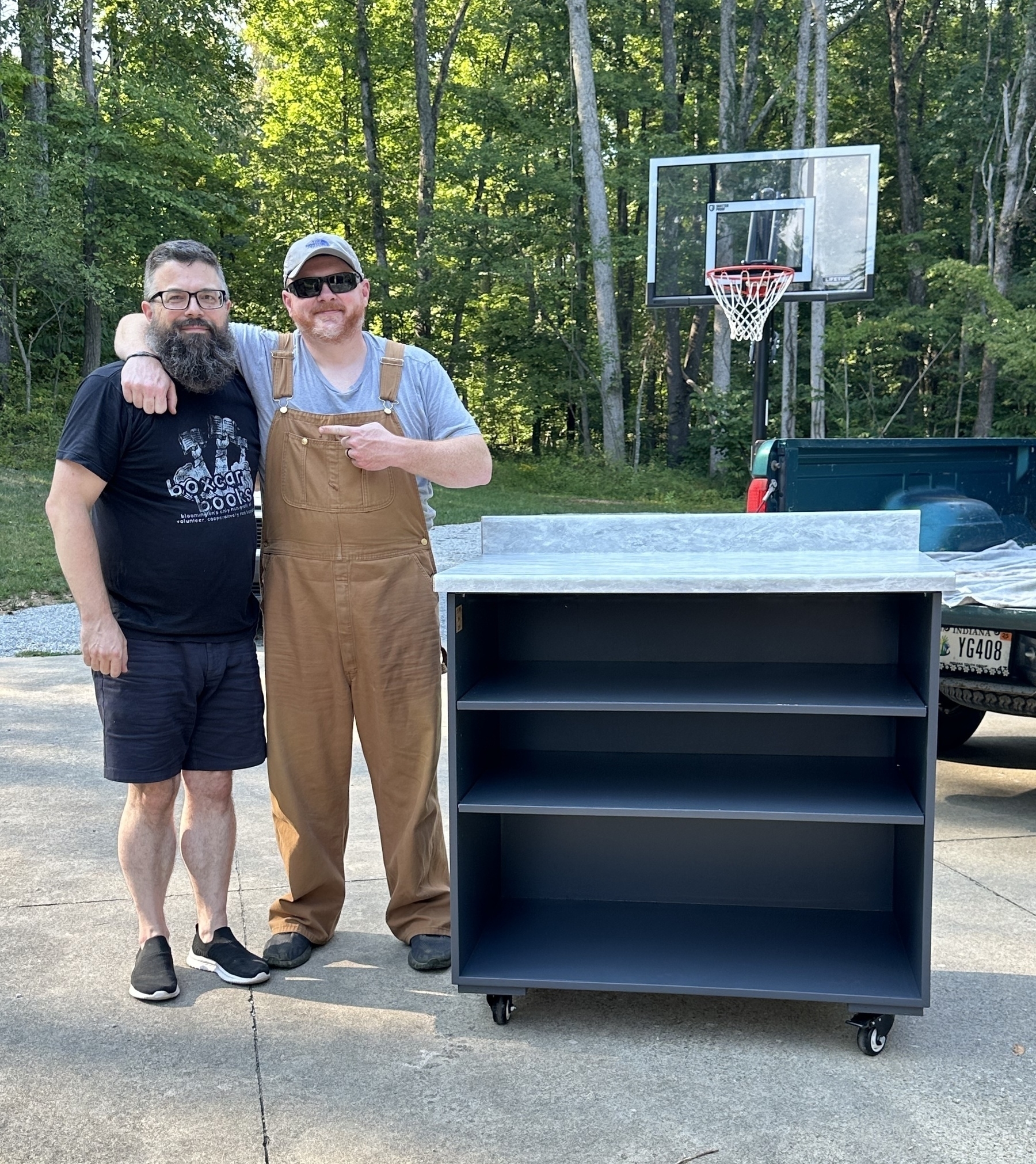
I also surprised him with a memorial to his grandfather burned inside the cabinet.
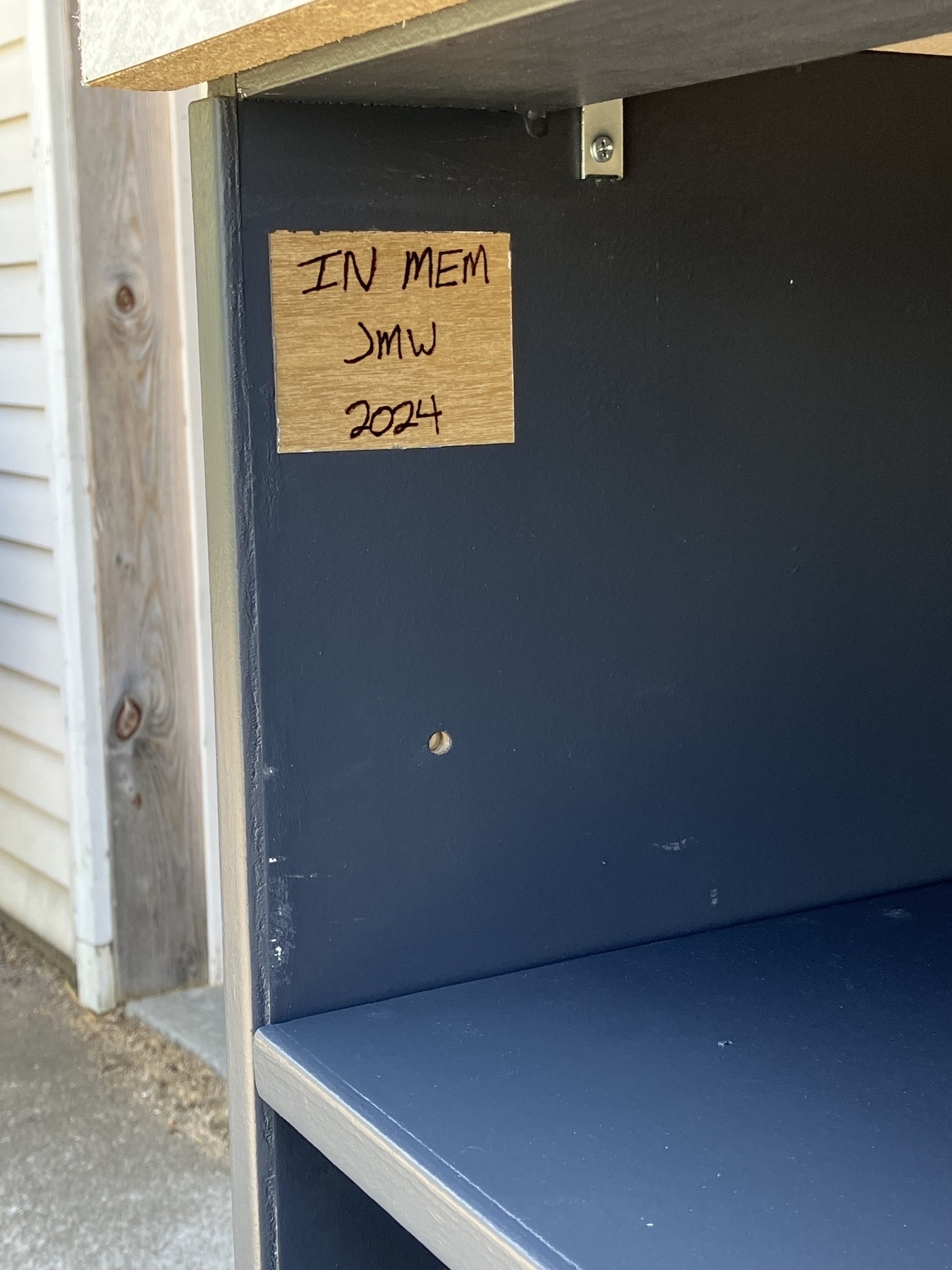
I experimented with burning through the paint on some scrap and it looked okay but it also had a decent chance of going wrong. I decided to leave it unpainted and then finished the spot with some spray polyurethane for protection.
Here it is in its new home
